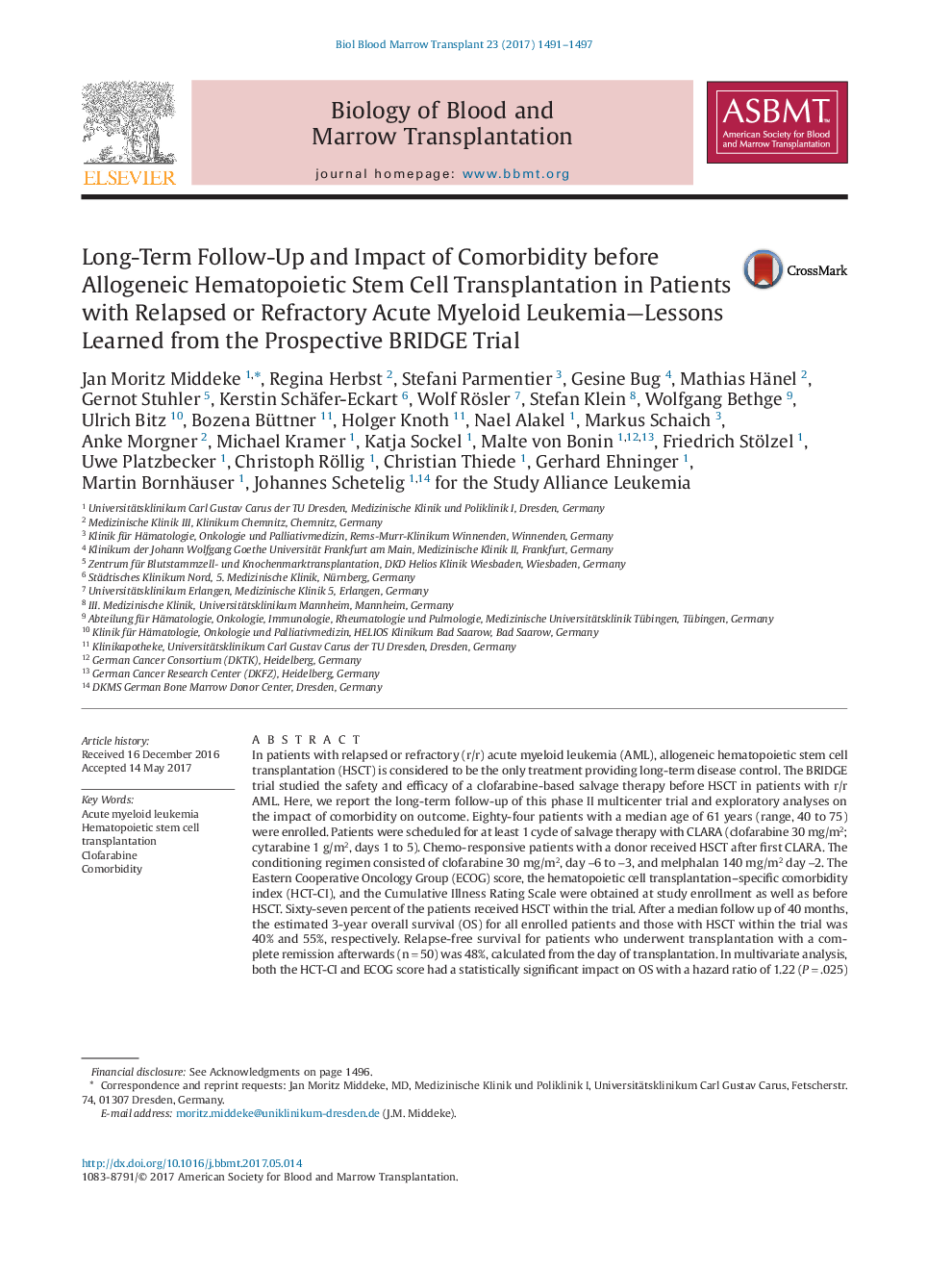| کد مقاله | کد نشریه | سال انتشار | مقاله انگلیسی | نسخه تمام متن |
|---|---|---|---|---|
| 5524382 | 1546237 | 2017 | 7 صفحه PDF | دانلود رایگان |
- A clofarabine-based salvage therapy combined with early allogeneic hematopoietic stem cell transplantation in patients with relapsed or refractory acute myeloid leukemia provides good long-term results
- Comorbidity evaluation based on the hematopoietic cell transplantation-specific comorbidity index and Eastern Cooperative Oncology Group score provided prognostic information on overall survival and thus show the feasibility and clinical relevance of comorbidity evaluation at the time of diagnosis of relapsed or refractory acute myeloid leukemia
In patients with relapsed or refractory (r/r) acute myeloid leukemia (AML), allogeneic hematopoietic stem cell transplantation (HSCT) is considered to be the only treatment providing long-term disease control. The BRIDGE trial studied the safety and efficacy of a clofarabine-based salvage therapy before HSCT in patients with r/r AML. Here, we report the long-term follow-up of this phase II multicenter trial and exploratory analyses on the impact of comorbidity on outcome. Eighty-four patients with a median age of 61 years (range, 40 to 75) were enrolled. Patients were scheduled for at least 1 cycle of salvage therapy with CLARA (clofarabine 30âmg/m2; cytarabine 1âg/m2, days 1 to 5). Chemo-responsive patients with a donor received HSCT after first CLARA. The conditioning regimen consisted of clofarabine 30âmg/m2, day â6 to â3, and melphalan 140âmg/m2 day â2. The Eastern Cooperative Oncology Group (ECOG) score, the hematopoietic cell transplantation-specific comorbidity index (HCT-CI), and the Cumulative Illness Rating Scale were obtained at study enrollment as well as before HSCT. Sixty-seven percent of the patients received HSCT within the trial. After a median follow up of 40 months, the estimated 3-year overall survival (OS) for all enrolled patients and those with HSCT within the trial was 40% and 55%, respectively. Relapse-free survival for patients who underwent transplantation with a complete remission afterwards (nâ=â50) was 48%, calculated from the day of transplantation. In multivariate analysis, both the HCT-CI and ECOG score had a statistically significant impact on OS with a hazard ratio of 1.22 (Pâ=â.025)and 1.72 (Pâ=â.001), respectively. Using a clofarabine-based salvage therapy combined with early allogeneic HSCT, we were able to achieve good long-term results for patients with r/r AML. In this cohort, both the HCT-CI and the ECOG scores gave prognostic information on OS, showing the feasibility and clinical relevance of comorbidity evaluation at the time of diagnosis of r/r AML patients.
Journal: Biology of Blood and Marrow Transplantation - Volume 23, Issue 9, September 2017, Pages 1491-1497
